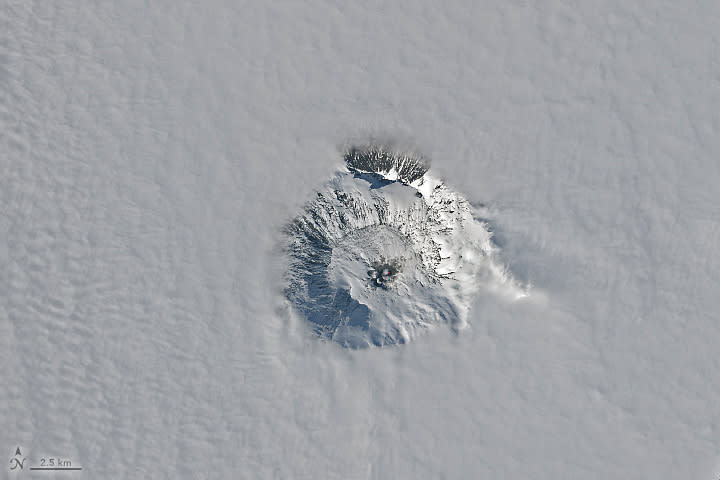Metallic rain: Volcano spews thousands of dollars worth of gold daily

Antarctica's Mount Erebus is one of the most active volcanoes on the planet, and it appears to be spewing out more than fire and ash, according to a recent report by IFLScience.
The crater is the second-largest of Antarctica's estimated 138 volcanoes, with a summit elevation of 3,794 metres. It's also the planet's southernmost volcano, and here's where it gets really interesting: Every day, it spits out an estimated $6,000 (USD) worth of gold.

Satellite imagery of Mount Erebus on November 25, 2023.(NASA Earth Observatory)
Gold? How?
Erebus could be creating gold dust due to its unique environment, Explorers Web reports.
Exposed magma is usually hot enough to melt gold particles. Cooler magma veins can also hold gold particles, but they generally melt during an eruption.
Erebus is different, though, because it's situated in such a cold region. When Antarctica's frigid air passes over Erebus' lava lake, it creates the conditions for gold to form.
Well-travelled gold
The gold dust expelled by Erebus rains down on the surrounding environment, and it can be found as far as 1,000 km from the crater. To put this into perspective, that's roughly the distance between Victoria, B.C., and Calgary, Alta.
However, the flecks are tiny, measuring about 60 microns, which is about half the thickness of a human hair.
It's a phenomenon that has been captivating scientists for years: NewScientist first documented this unique gold formation at Mount Erebus in 1991, calling it a 'geological curiosity.' While other volcanoes have been known to release gold, Mount Erebus is the only one known to send it forth in metallic form.
Header image: Mount Erebus in 1972. USGS/Wikipedia/Public domain.


